#Hampshire History
Text
Waterloo Ironworks: A History of Taskers of Andover :: L. T. C. (Lionel Thomas Caswell) Rolt
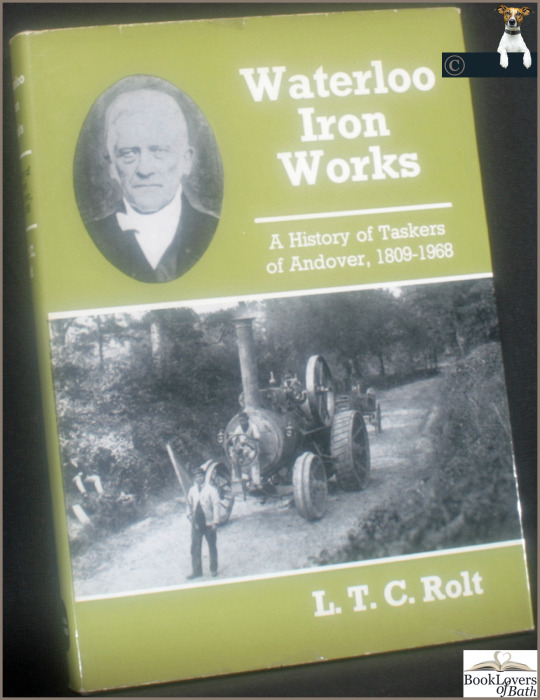
View On WordPress
#0-7153-4658-x#boiler makers#books by l t c (lionel thomas caswell) rolt#british iron industry#car industry#car trade#engine fitters#excelsior#first edition books#hampshire history#iron industry#iron trade#little giant#metal works#steam engine construction#steam engine design#steel industry#straw elevators#taskers andover#threshing machines#upper clatford
1 note
·
View note
Text

Snacks and root beer in Greenfield State Park.
New Hampshire
1975
#vintage camping#campfire light#camping#new hampshire#greenfield state park#history#road trips#family#outdoors#1970s
260 notes
·
View notes
Text
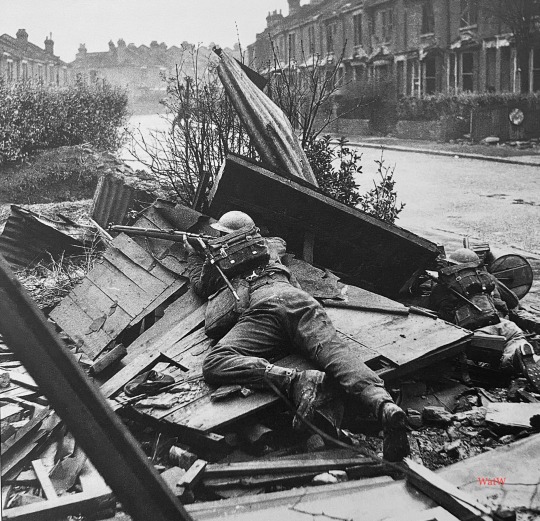
British infantrymen take part in a street fighting exercise amidst the ruins of a British street after an air raid - Lymington, Hampshire, England, 1941
#world war two#ww2#worldwar2photos#history#1940s#ww2 history#wwii#world war 2#ww2history#wwii era#lymington#1941#Hampshire#training#exercise#british army#great britain#england
163 notes
·
View notes
Text
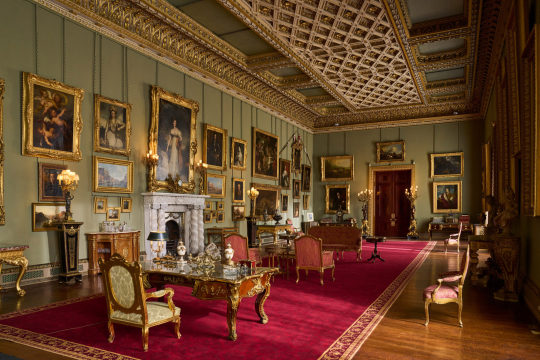
Somerley, Ellingham & Harbridge with Ibsley, Hampshire, England
#art#design#architecture#history#luxury lifestyle#style#luxury house#luxury home#georgian#country house#somerley#ellingham#harbridge#hampshire#united kingdom#red#white and royal blue#interior design#interiors
342 notes
·
View notes
Text
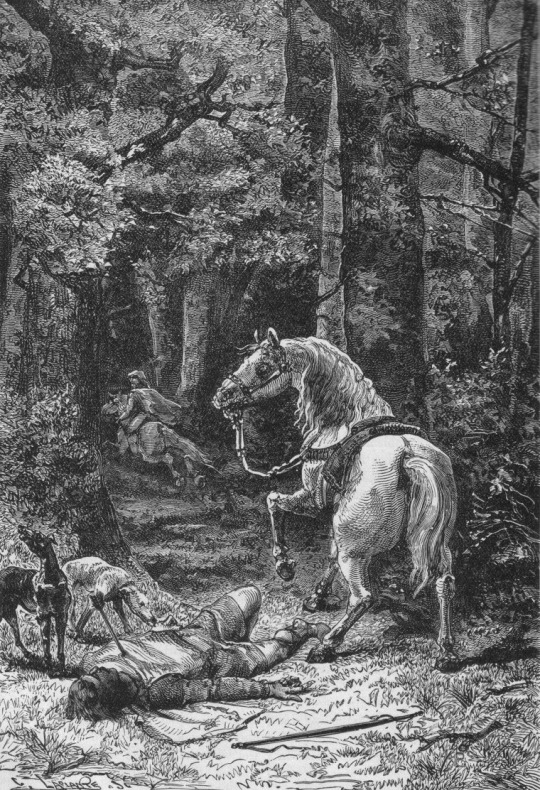
Death of William Rufus, King of England, 1100
by Alphonse de Neuville
#william ii#william rufus#king#england#death#art#hunting#walter tirel#walter tyrrell#assassination#history#new forest#forest#woods#woodland#medieval#middle ages#hampshire#king william ii of england#normandy#anglo norman#norman#europe#english#hunt#archer#arrow#arrows#archery#alphonse de neuville
245 notes
·
View notes
Text
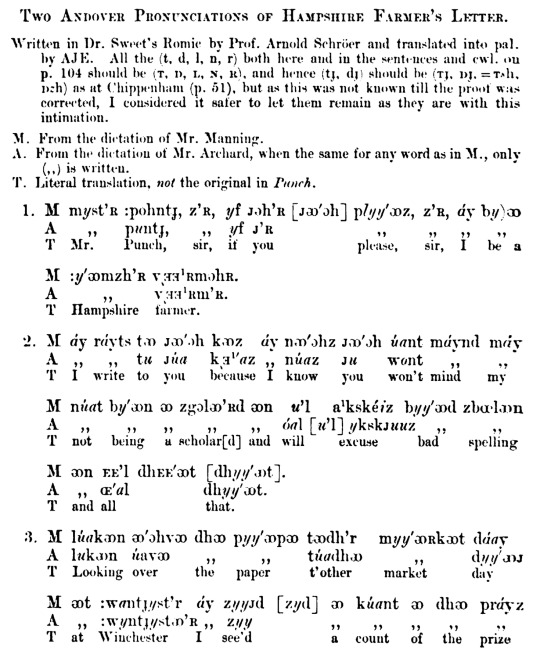


This is probably Bush and also Pullings's native dialect (though I have many MANY doubts about what exactly the methodology being used here was)
#they have texts and they have informants and they have the informants read the text but i'm not really sure how that's supposed to work#anyways this is definitely the dialect pullings grew up speaking since afaik he's the son of hampshire farmers#apparently chichester is in area 5 as well so also falls under this categorization#this is very unrigorous research btw. please take everything i am saying with a grain of salt i'm just fiddling around with an old book#i'll look for a good basic primer on history/dialectology of english at the library at some point perhaps#i do not have the historical context/cross-references to verify any of this guy's claims#i just really like dialect and english-language ones are so much fun what with all the crazy vowel combos#and apparently lots of rhoticity??? he's claiming this accent was also rhotic which is a little insane#would love to read a history of rhoticity in english tbh#perce rambles#adventures in historical sociolinguistics#percy yells at cecil scott#The Creative Endeavor and other aubreyad nonsense#if you go to the source there's a lot of texts in this section i just picked one
20 notes
·
View notes
Text
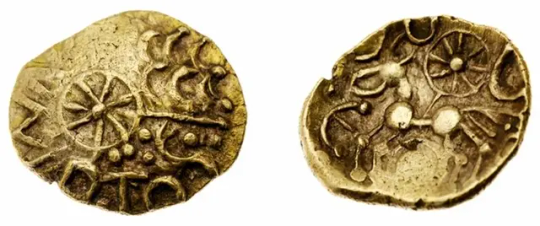
Gold Coin Reveals Unknown British King
New light has been shed on a little-known part of British history thanks to the extraordinary discovery of a coin bearing the name of a forgotten Iron Age ruler in Hampshire, south-east England.
The coin, which has the inscription “Esunertos,” was discovered by a metal detectorist in a field in Hampshire. Esunertos may have ruled as a king from the powerful Danebury Fort, according to experts’ speculation, and this find has been hailed as “one of the outstanding discoveries of recent decades.”
Leading Iron Age experts have studied the coin and deduced it to be struck by a pre-eminent male figure dubbed ‘IISVNIRTOS’ whose name translates as ‘Mighty as the God Esos’.
The coin was struck sometime between 50 and 30 BC, shortly after Julius Caesar’s first Roman raid of Britain in 55 BC.
The coin, which is thought to have been produced between 50 and 30 BC, was struck in conjunction with Julius Caesar’s first Roman raid on Britain in 55 BC when the Roman general and his 20,000 soldiers landed on the Kent coast. Despite a confrontation with Celtic warriors on the beach, the Romans encountered difficulties landing due to rough seas and eventually had to return home.
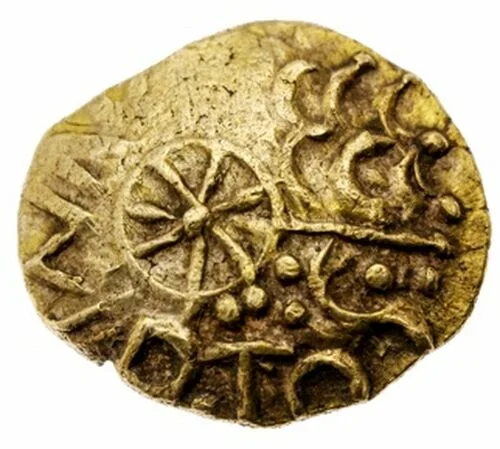
Gregory Edmund, Iron Age Coin Specialist at Spink Auctioneers said: “This fabulous piece of prehistoric artwork completes the mental image we have when we think of Iron Age Britain – the war horse and chariot.
“But it also surprises us with the appearance of classical languages like Latin.
Dr John Sills of the Celtic Coin Index at the Ashmolean Museum said: ‘It is one of the outstanding discoveries of recent decades in Celtic numismatics.’
Initially, it was anticipated that the gold coin would sell for around £4,000 ($5000) at auction. But contrary to all expectations, it broke a record at Spinks Auction by selling for an astounding £20,400 ($25,500).
The coin was found by Lewis Fudge, a metal detectorist who received permission to search a farmer’s field in March this year. Lewis Fudge expressed his elation, stating:
“I am over the moon. If it were not for people in the auction room, I would have jumped around. The collectors I spoke to are gobsmacked. I’m so glad I did not take them up on their private offers before the auction. To think my find has generated its own Wikipedia page is incredible.”
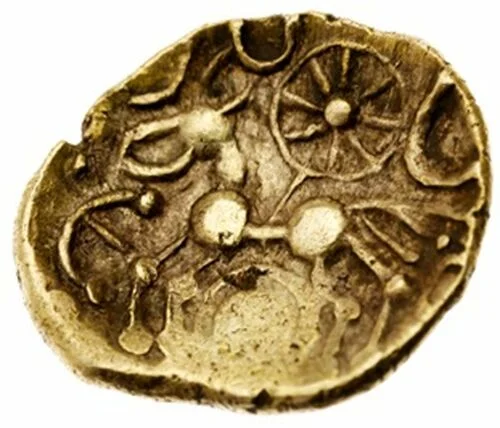
Spink Auctions describe the coin as a quarter slater with the obverse side of the coin bearing the name Esunertos in Latin, and with the worn head of Apollo formed of three interlocking rows of outward facing crescents, a seven-spoked wheel at center in lieu of the ear, and an eye of visage with radiating spike towards the neckline.
The reverse of the coin has a tripled-tailed horse, with a pincer-like mandible for face and linear ear, with pelleted mane, yoke or bucranium above the head, an 8-spoked wheel above spearing into the horse’s back, and double or triple ringed annulet below.
By Leman Altuntaş.

#Gold Coin Reveals Unknown British King#Hampshire England#Danebury Fort#Esunertos#gold#gold coin#ancient gold coin#ancient artifacts#archeology#archeolgst#metal detecting#history#history news#ancient history#ancient culture#ancient civilizations#iron age#celtic history
41 notes
·
View notes
Text

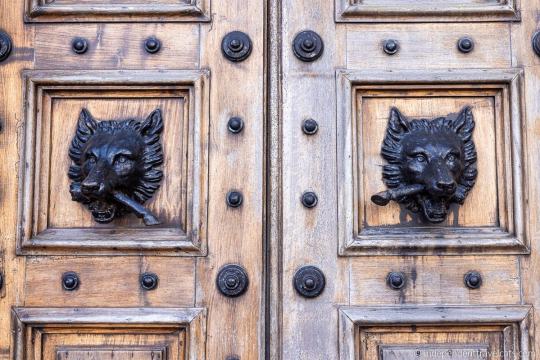
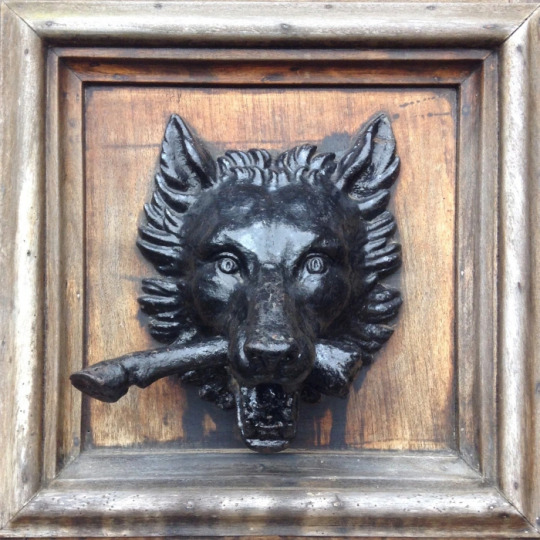
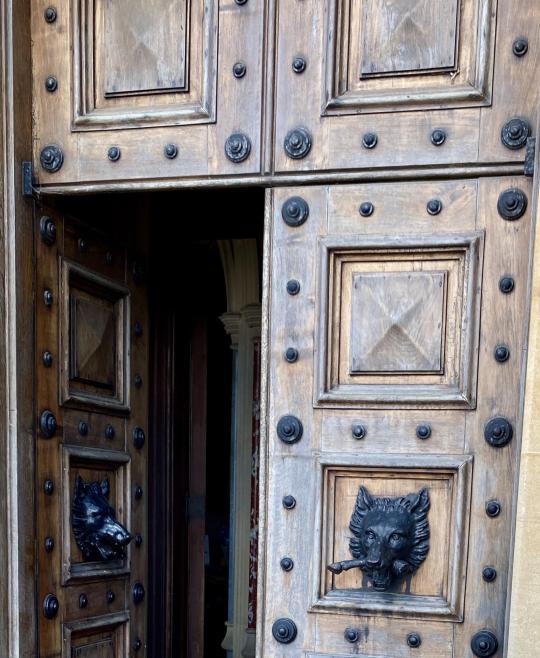
Highclere Castle, Highclere, Hampshire, United Kingdom,
The front door of black walnut displays two wolves’ heads each holding the foot of a deer. The left hand one is a door-knocker, the right hand one purely decorative.
#art#design#doorway#architecture#heavensdoorways#doors#doorsdesign#doordesign#entrance door#door#castle#highclere castle#hampshire#united kingdom#history#style#walnut#door gandle#wolve#deer#door-knocker#downtown abbey
34 notes
·
View notes
Text
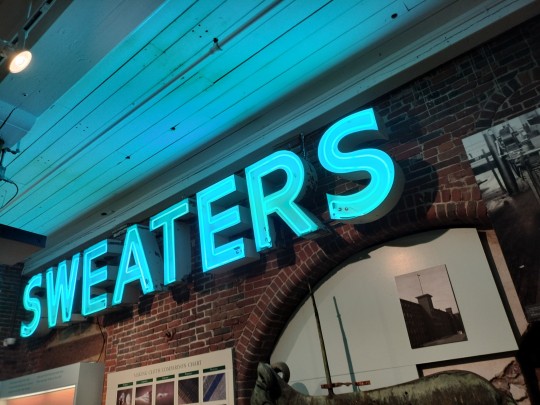

Antique neon signage at Millyard Museum, Manchester NH. May 2023
(follow for more museum / travel / food / local interest)
64 notes
·
View notes
Text

Glen Ellis Falls, Albert Bierstadt, 1869
#art#art history#Albert Bierstadt#landscape#landscape painting#waterfall#New Hampshire#New England#United States#Hudson River School#Rocky Mountain School#American art#German-American art#19th century art#Zimmerli Art Museum at Rutgers University
351 notes
·
View notes
Text

Appalachian Mountain Club caretaker Steve Page greets campers at Liberty Springs Tentsite in the first year AMC employed backcountry caretakers. The tentsite served as a pilot for the popular trails program.
New Hampshire
1970
#vintage camping#campfire light#appalachia#new hampshire#appalachian mountain club#liberty springs#camping#history#1970s
92 notes
·
View notes
Video
Vintage Dolls at Milestones Museum by Paula Puddephatt
Via Flickr:
Basingstoke, Hampshire, UK
#dolls#vintage dolls#Milestones Museum#museum#Basingstoke#Hampshire#Hants#England#UK#local history#history#historic#retro#nostalgia#vintage#the past#living history#hants county#flickr
10 notes
·
View notes
Photo
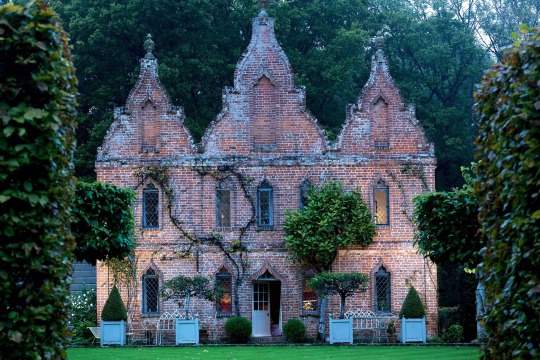
The Hunting Lodge at Odiham, Hampshire, United Kingdom,
Photo Credit: Dan Fontanelli
#art#design#architecture#hunting lodge#lodge#odiham#united kingdom#nicky haslam#luxuryhouse#luxuryhome#luxurylifestyle#style#history#dan fontanelli#countryhouse#gardens#hampshire
1K notes
·
View notes
Text

The Wykeham Arms
17 notes
·
View notes
Photo

Ex-220 converted to a Cabbage in latest Downeaster paint scheme. Power for the train was P42 108.
Exeter, NH
February 23, 2008
32 notes
·
View notes
Text
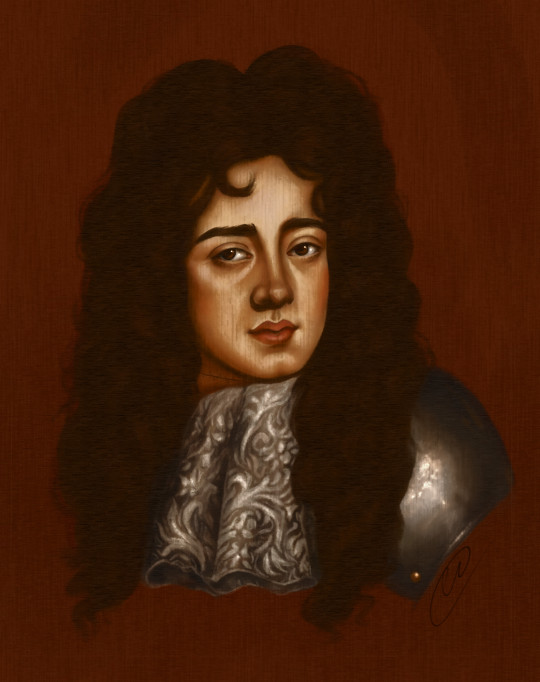

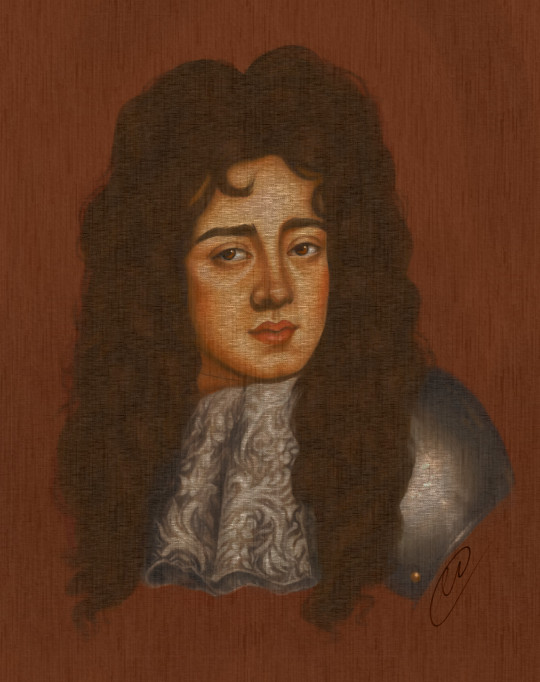
Digital portrait of James Scott, Duke of Monmouth
(05/2023)
Based on a portrait of him from about 1683, with my own spin on it!
Probably most people aren't familiar with the Duke of Monmouth, but living a few miles away from where the infamous battle of Sedgemoor (the last battle fought on English soil btw!) took place means I've known about him for basically my whole life! (there's also a local legend that Queen Victoria pulled the blinds of her carriage down when she was travelling through the area because of how the Somerset people had supported the Duke lol) He was an illegitimate son of Charles II and attempted to overthrow his uncle (James II) by inciting a rebellion across the West Country but was unsuccessful and ended up being executed for treason...
But recently I discovered that there was a rumour that after he was beheaded, they realised they didn't have an official portrait of him, so they stitched his head back on his body and had him 'sit' for a portrait lol
Have to say that this is totally untrue, of course lol (there's several portraits done of him prior to his death), but it's such a bizarre and gruesome detail I couldn't resist including a hint of it in my painting here!
#historical portrait#historical figure#duke of monmouth#monmouth rebellion#history#digital painting#artists on tumblr#british history#somerset history#another interesting detail bout monmouth is that he ran away once his army were defeated at sedgemoor#but was discovered days later dressed as a peasant in a pea field in hampshire lol
15 notes
·
View notes
